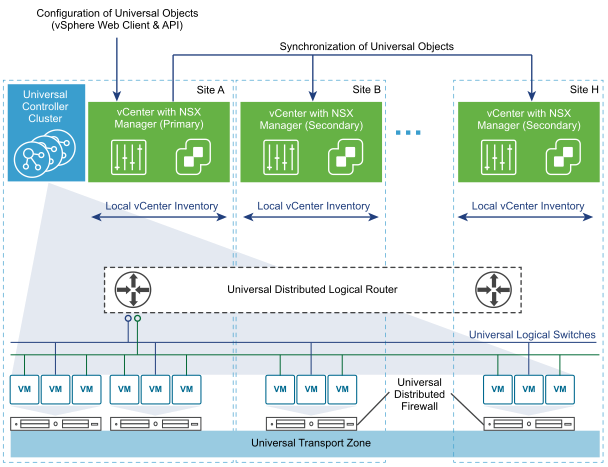In a cross-vCenter NSX environment, you can have multiple vCenter Servers, each of which must be paired with its own NSX Manager. One NSX Manager is assigned the role of primary NSX Manager, and the others are assigned the role of secondary NSX Manager.
The primary NSX Manager is used to deploy a universal controller cluster that provides the control plane for the cross-vCenter NSX environment. The secondary NSX Managers do not have their own controller clusters.
The primary NSX Manager can create universal objects, such as universal logical switches. These objects are synchronized to the secondary NSX Managers by the NSX Universal Synchronization Service. You can view these objects from the secondary NSX Managers, but you cannot edit them there. You must use the primary NSX Manager to manage universal objects.
On both primary and secondary NSX Managers, you can create objects that are local to that specific environment, such as logical switches, and logical (distributed) routers. They exist only within the environment in which they were created. They are not visible on the other NSX Managers in the cross-vCenter NSX environment.
NSX Managers can be assigned the standalone role. A standalone NSX Manager manages an environment with a single NSX Manager and single vCenter. A standalone NSX Manager cannot create universal objects.
